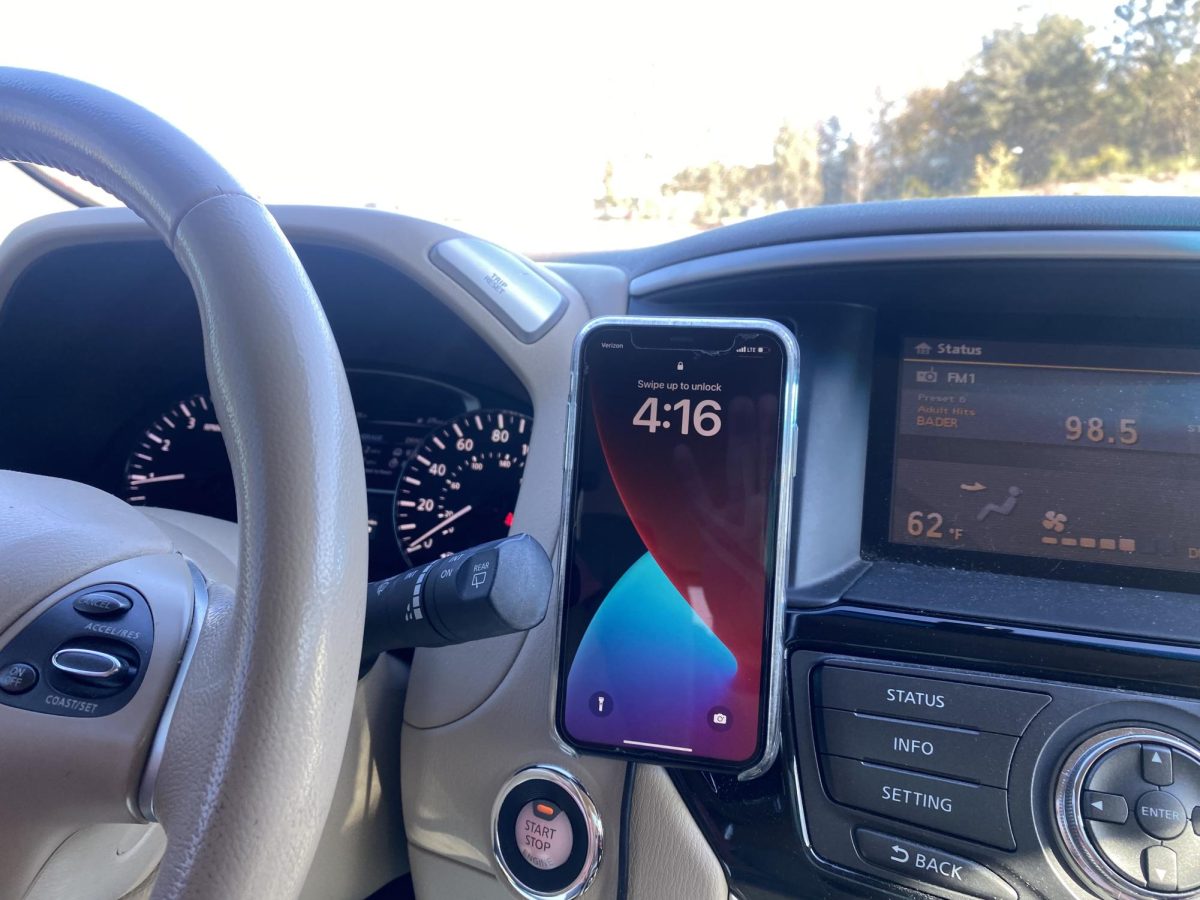When Karl Benz built the first automobile in 1893, it is doubtful he knew the consequential deaths his invention would cause. Currently, 1.35 million lives are lost each year on the road, making up for about 2 percent of all deaths in 2022.
As of 2020, in the United States, thirteen percent of vehicle crashes involve distracted driving. This data exists despite 48 of the 50 United States passing laws to make texting and driving illegal.
To dodge these regulations, citizens of the United States have adopted phone mounts on their windshields and cup holders as a way to excuse their reckless habit. These hands-free devices are still a distraction.
When someone is visually distracted, their eyes are looking somewhere else besides the road. Hands-free devices are oftentimes mounted on the dashboard, which is only inches away from the driver’s face and can therefore cause people to instinctively look at the screen as they receive messages.
Even being distracted for a split second can result in a deadly crash. A car traveling at 55 miles per hour can cover an entire football field in five seconds. Attempting to concentrate on both your phone and the road during this time is both hazardous and near impossible.
Manual distraction involves anything that keeps somebody’s hands off the wheel. People see hand-free devices as a way to combat this form of diversion, but they ignore the sheer amount of actions voice controls cannot yet entail.
As of 2021, Google’s speech-to-text transcription is inaccurate 16 percent of the time, and for accented English speakers, speech recognition can be even more extensive. If voice-controls fail to understand a driver, they may be inclined to edit their message causing them to avert their focus from the road.
When someone is cognitively distracted, they can look ahead with both hands on the wheel, but their mind is in a different place. Even talking on the phone is categorized as a disturbance because it distracts your main focus from driving. As neuroscientist Kevin Madore and Stanford professor Anthony Wagner have found, “the human mind and brain lack the architecture to perform two or more tasks simultaneously.”
With multitasking being a misconception, it is impossible for someone to keep up a phone call conversation or even send a voice text without disregarding the road.
Companies advertise phone mounts as a safe product, causing many people to be unaware of the distractions they have the capability of causing. With the phone being just inches away from the driver’s hand, it is impossible to ignore the evident interference it may have with the driver’s focus.
Many states have laws against windshield mounts because they obstruct the view of the driver. Unfortunately, our government still has not passed laws against devices that hook the phone to a cup holder or air vent. In order to combat the numbers brought by phone-involved crashes, we first have to bring awareness to the dangers these disguised hazards present.
There is no way to counter a distraction besides removing it from view. If we want to make a change that can save lives, we must push new laws. Once our state governments realize that we as citizens care, they will be obliged to pass laws against all hands-free devices.
These statistics are not just numbers. They were once real people with dreams, memories, and family and friends who loved and cared for them. How many people need to die until we start taking these numbers seriously?
If we are going to make a change, we need to stop engaging in potentially deadly behavior. No matter how distinctive or unique we think our lives are, we are not an exception to the reality of the data. If we continue to shrug off these statistics, we face the risk of becoming part of them and ultimately leaving behind a legacy left unfinished.
Opinions expressed in editorials are those of the writer(s). These views may not represent the adviser, The Prowler, advertisers/sponsors, the Starr’s Mill High School administration or staff , or Fayette County Public Schools as a whole. Please see our FAQs for more information pertaining to the rights of The Prowler’s staff members.



Lynn Priester • Oct 15, 2023 at 10:48 am
Great article! Very informative and definitely makes people more aware. This article should be used to help change laws across the nation.